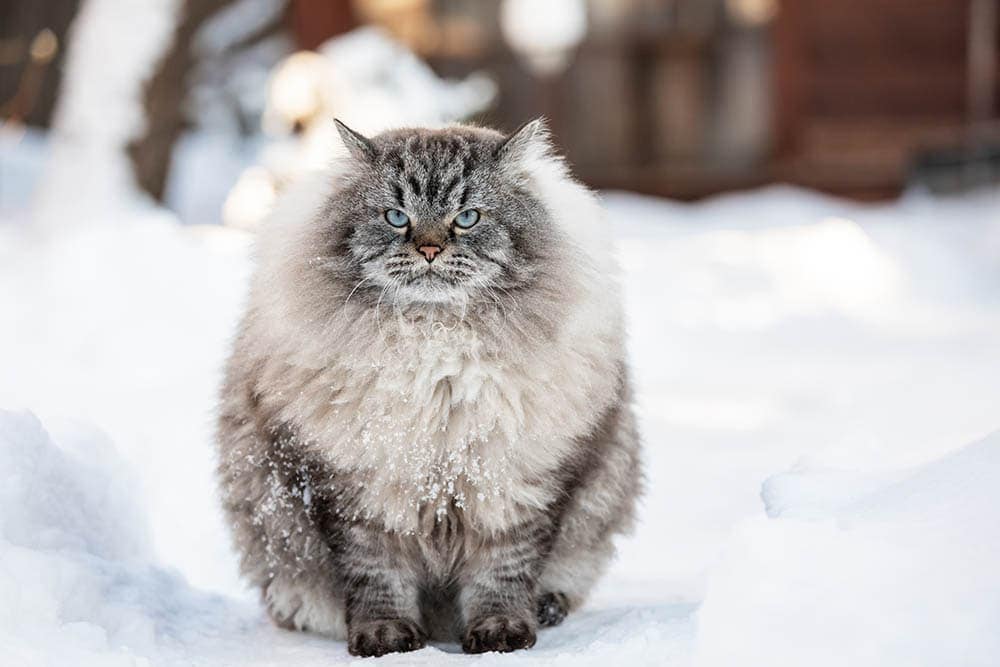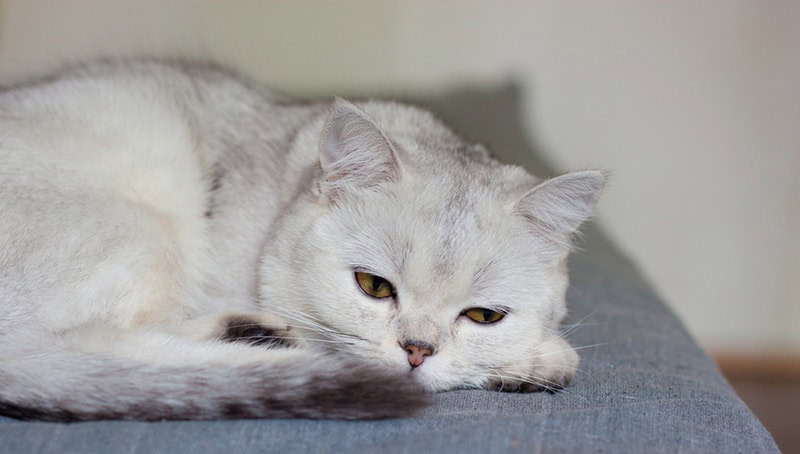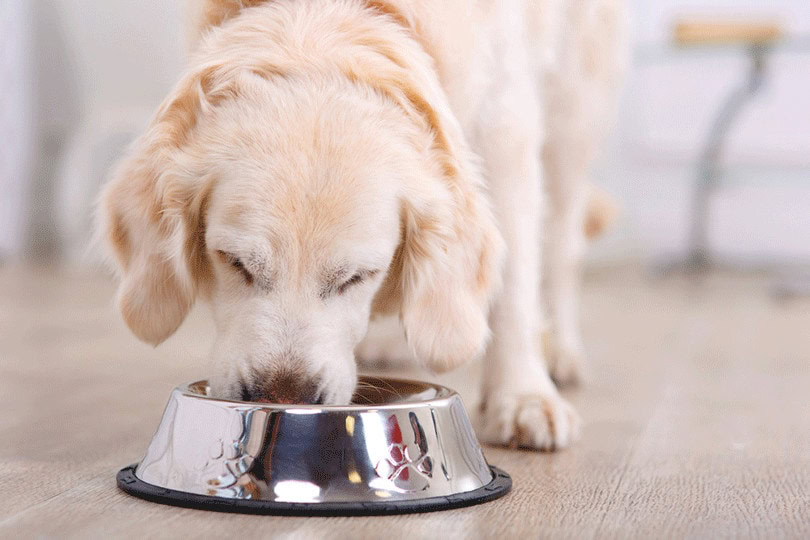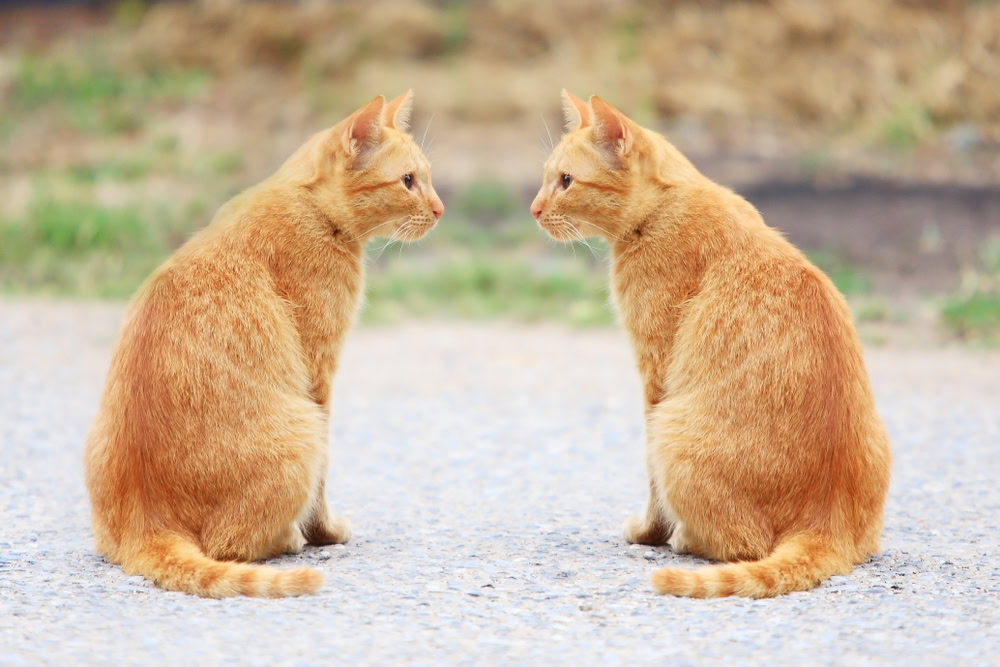VET APPROVED

The information is current and up-to-date in accordance with the latest veterinarian research.
Learn more »Click to Skip Ahead
Given that cats’ ears usually feel warm, it’s normal to wonder if your companion is doing okay if their ears are suddenly cold. Most of the time, it’s nothing to worry about and just a response to colder weather. However, cold ears can also be a sign of something more serious, particularly when seen with signs of illness, such as lethargy and breathing difficulties. Below are the most common reasons for cold ears on your cat and what you need to be looking out for.

The 5 Reasons Why Cat’s Ears Are Cold
1. The Cat Is Cold
Healthy cats usually have body temperatures that range from 100.4º to 102.5º Fahrenheit (38.1–39.2ºC) and are happiest hanging out in temperatures between 86ºF and 97ºF (30–36ºC). Most cats will cope when the mercury dips as low as 45ºF (7ºC), but when it’s a bit chilly outside, cats will often have cold ears.
As the ears have only a thin fur coating and the blood vessels are very close to the skin surface, they are used for thermoregulation:
- When it is hot, the blood vessels in the ear dilate to increase blood flow to an area where it can lose heat and help cool the body down.
- In cold conditions, cats’ bodies send more blood to their vital organs and less to extremities, like their ears, to avoid losing heat to the environment.
Pets who’ve spent time outside in cool weather will have cold ears. Make sure to dry your cat’s fur when they come inside if they’ve been out in the snow or rain to help them warm up, particularly if your cat doesn’t often spend a lot of time outside, as they will likely be more sensitive to cold conditions. Thin cats often feel the cold more than pets with extra insulation, so if your thin cat’s ears are often cold, consider turning up the thermostat a few degrees and investing in a few nice, warm cat beds for your pet.

2. They’re Resting
Cats sometimes have reduced blood flow to their extremities when snoozing, and their metabolism also slows while sleeping and napping. It’s normal for cats’ ears to be a bit cooler to the touch than the rest of their bodies when they’re resting or inactive for long periods. This is linked to their thermoregulatory function, as it helps the body to conserve heat and reduce metabolic output.
Cats spend several hours napping and resting, and while most sleep around 15 hours per day, it’s not unusual for some pets to sleep for up to 20 hours! If your companion’s ears are cold while resting or sleeping but warm when they’re up and about, there’s likely nothing to worry about.
3. Serious illness
If the temperature outside is reasonably high and your cat’s ears are cold, it could be a sign that your pet has suffered a major insult or injury, or has toxic shock from a severe infection or poison. Shock is a full-body reaction that can result in hypotension, hypothermia, and cardiac arrhythmias and can lead to cell and tissue death. It can have multiple causes, including trauma, blood loss, heart failure, sepsis, or poisoning.
Signs of shock can include weakness, lethargy, rapid heart rate and breathing, vomiting, and diarrhea. Fever is sometimes seen in the early stages, and low body temperatures are more common as the condition advances. Shock and toxic shock are veterinary emergencies requiring prompt treatment.

4. Heart Disease
Cardiac disease can affect cats of all age groups, and how it presents will depend on the type and severity of the heart problem. Most cats with heart disease show no external signs at all, and some forms of the disease won’t even be detected at a routine vet exam, which makes feline heart disease tricky to diagnose and treat. The most common form of heart disease in cats is a condition called hypertrophic cardiomyopathy, where the heart muscle becomes thickened, causing blood pressure to increase and sometimes resulting in clots forming and lodging in different parts of the body.
Cold ears in a cat, accompanied by signs such as weakness, vocalizing, hind limb weakness, or pain, could be a sign that your cat has a blood clot and you should contact a vet immediately. If your cat has been previously diagnosed with a heart condition and you notice that their ears regularly feel cold, particularly when the outside temperature is warm, it might be time for a check up with your vet.
5. They’re Seniors
Cats often have difficulty regulating their body temperatures as they age, and cats also tend to lose weight as they age. Cats over the age of 10 can sometimes struggle to maintain their weight due to changing metabolic needs and a range of health conditions.
If your cat is losing weight unexpectedly, it may be time to book them in for a check up. Although common, weight loss in older cats isn’t something that should just be accepted as normal. It is often due to underlying geriatric health issues, many of which can be treated or managed.
- Dental disease is very common in older cats. They may not show outward signs of pain or discomfort, but problematic teeth can prevent your cat from eating properly and meeting their metabolic needs.
- Hyperthyroidism, diabetes or renal (kidney) disease are relatively common in aging cats and can also lead to unexpected weight loss. Early diagnosis and treatment are important for maintaining health and body condition, as well as improving your elderly cat’s quality of life.
- Neoplasia (cancer) unfortunately becomes more common in older cats, but some cancers can be successfully treated if detected early. It is important to ensure that your elderly cat is not suffering, as they will often do so quietly.
- Arthritis is very common in older cats, and with reduced activity comes reduced muscle mass. This will mean that not only does your cat appear thinner, but it will have more difficulty staying warm without the energy produced in muscle tissue. Fortunately, there are a range of options for managing arthritis in cats that will help them lead more comfortable lives and maintain their heat-producing muscles. As with dogs and humans, arthritis should not be just accepted as part of getting older when there are safe and effective pain relief options available.
Speak to your vet about how to help your elderly cat continue to live their best life.

A Note on Hypothermia & Other Cold-Related Conditions
Hypothermia is a severe medical condition that can be fatal if not promptly treated. Cats suffering from hypothermia have temperatures of 97.8ºF (36.5ºC) or less, which is often accompanied by cold ears, noses, and paws. They often shiver and eventually become lethargic. Hypothermia is considered a veterinary emergency, but many cats recover with prompt treatment.
Cats that have been outside in the cold and have ears that are discolored, swollen, or painful to the touch may be suffering from frostbite and should be immediately seen by a veterinarian. Wrap your cat in blankets to keep them warm, but avoid attempting to warm sensitive areas with external heat sources or touching potentially frostbitten body parts.
When attempting to rewarm your cold kitty, do not be too aggressive with your methods, as rapid warming can be dangerous to the body and cause damage to the skin. Indirect heat sources are much safer, so use things like hot water bottles wrapped in protective covers or towels and blankets warm (not hot) from the dryer, or position the cat in a room with a heater but not right beside it. Be sure to rotate the blankets and towels with fresh ones, as they will likely cool down quickly. Do not use items like hair dryers to dry the fur. Instead, vigorously rub with a soft towel to dry the coat and skin and stimulate blood flow.

Summary
There are a number of reasons for cats to have cold ears, ranging from normal thermoregulation and metabolism to geriatric conditions, weight loss, and even serious illness. Most of the time, cold ears are nothing that a warm bed and a snuggle won’t fix, but if those chilly ears are accompanied by weight loss, lethargy, weakness, vomiting, rapid breathing, or any other worrying signs, it is time to phone your vet.
Remember, if you think something is wrong, you’re probably right, so it’s always better to get them checked.
Related Reads:
- Why Are My Cats Ears Hot? 6 Vet-Reviewed Reasons
- Ear Cancer in Cats: Signs, Causes & Treatments (Vet Answer)
- Shock Due to Bacterial Infection in Cats | PetMD
- The Special Needs of the Senior Cat | Cornell University College of Veterinary Medicine
- Hypertrophic Cardiomyopathy | Cornell University College of Veterinary Medicine
- Cat Hypothermia Symptoms – Hypothermia in Cats | PetMD
- Signs a Cat Is Dying & How to Comfort Them | Daily Paws
- How is frostbite treated? | VCA Animal Hospitals
- Hypertrophic Cardiomyopathy | Cornell University College of Veterinary Medicine
Featured Image Credit: Kristi Blokhin, Shutterstock












